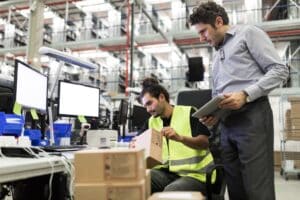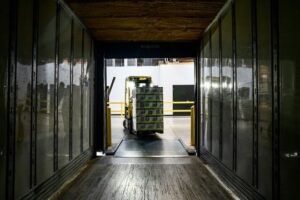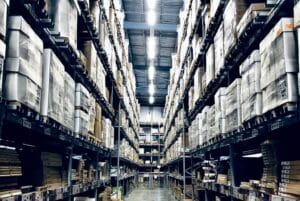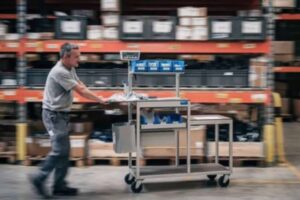The features and modules of our EGO solution
Features covering all your warehouse activities!

EGO Features

Planning
Container tracking management, DESADV integration, Entry planning, Load forecasting, Delivery announcement management,
Delivery and collection schedule management,
Load smoothing.
Functions: DESADV dynamic scheduling, workload calculation algorithm.

Unloading
Driver reception,
Queue management,
Dock door definition,
Unloading and unloading control,
Digitalization of unloading controls,
Digitalization of CMR.
Functions: Dock management, orphan appointment management, queue management, photo taking, tablet and mobile kiosk management.

Reception
Single/multi-reference receiving,
Management of pallet containers and sub-containers,
Management of logistical variants,
Consideration of batches, DLP, entry deadline,
Management of receiving disputes,
Management of control tasks,
Taking dimensions, weight and barcode in the receiving flow,
Automatic labeling of carton, bag and pallet units,
Identification of goods to be cross-docked and counter-marked.
Functions: Container and sub-container management, multi-type barcode integration, GS1 compliance, multi-attribute stock management, dynamic labeling and integrated label management, tablet and mobile desk receipting, simultaneous and real-time multi-operator receipt management, dispute reporting with photo capture.

Storage
Automatic addressing under multiple constraints,
Consideration of rotation classes,
Dynamic location management,
Mass management,
Accumulation rack,
"Stackability" management,
Cross-docking with direct docking,
Short-circuiting of the reserve for direct picking,
Management of pallet storage and multi-reference trolley storage with optimization of deposits.
Functions: Multi-criteria sorting algorithm, dynamic algorithm optimization, capacity and multiple path management, trolley and equipment management, consideration of storage constraints, container and cell capacity, combined mission management.

Production
Production lead time management,
Production order integration, Production
list generation,
list preparation,
Production declaration,
Loss management,
Production order closure,
Raw material traceability,
Production release request management,
Consumption declaration.
Functions: Integration of nomenclatures, range management, integration of machine concepts, declaration of losses and consideration of non-depalletization criteria, upward and downward traceability based on an action log logic.

Inter-site shuttles
Inter-site shuttle management,
Creation of transfer requests,
Guided preparation of transfer requests,
Docking and loading of shuttles,
Monitoring of shuttle statuses,
Transit management,
Unloading of shuttles and coupling with addressing.
Functions: Shuttle management, registration and status, shuttle scheduling and shuttle status management, mobile store management, integration of shuttle flows into preparation and storage flows.

Declarative exits
Management of declared outputs,
Preparation of declared outputs,
Management of free outputs,
Management of supplier returns,
Disposal,
Miscellaneous outputs.
Functions: Management of guided and free exits, strategies for managing declarative exits and summary of declarative exits.

Planning and preparation
Order integration,
Delivery order integration,
Preparation planning and load smoothing,
Sequencer management to automate preparation, reservations and the choice of the most suitable preparation method,
Management of 12 distinct preparation methods,
Consideration and calculation of pre-packing,
Anticipation of replenishments of pickings,
Management of cutting criteria for preparation slips according to the areas concerned.
Functions: Planning, load control, sequencer, pre-packaging, 12 preparation modes, preparation zone management.

Preparation
Order preparation,
Multi-stage preparation,
Monitoring of order processing progress,
Operator assignment, and multi-criteria operator guidance,
Prioritization of orders to be prepared and management of the push flow,
Definition of scan strategies,
Management of breakage strategies,
Definition of re-preparation criteria,
Management of criteria for handling backorders.
Functions: Trolley management, multi-criteria push flow, terminal control console, management of "redeliveries" and backorders.

End of chain
End-of-line management and preparation control,
Weight control management,
Document management and editing principles,
Docking and loading management with loading control,
Carrier correspondence control at dock during carrier handover,
Editing of responsibility transfer documents.
Functions: Integration of weighers, status generator, label generator, conveyor coupling, DESADV, integration of dock cameras, RFID control gantry, push flow in dock feed.

Replenishment of picking areas
Management of movements and redevelopment of areas,
Movement under constraints,
Management of re-addressing,
Consolidation of locations,
Optimization of storage areas,
Identification of under-utilized addresses.
Functions: Management of zone typologies, definition of fill rates, analysis of occupancy rates and cross-referencing of "rotation class" / "stock class".

Relocation and optimization
Management of movements and redevelopment of areas,
Movement under constraints,
Management of re-addressing,
Consolidation of locations,
Optimization of storage areas,
Identification of under-utilized addresses.
Functions: Management of zone typologies, definition of fill rates, analysis of occupancy rates and cross-referencing of "rotation class" / "stock class".

Inventory management
Stock control management,
Rotation class management,
Receiving logistics family management,
Addressing,
Preparation,
Replenishment,
Dynamic management of replenishment criteria for picking.
Functions: Inheritance management, logistics family management, control function.
Additional and complementary modules
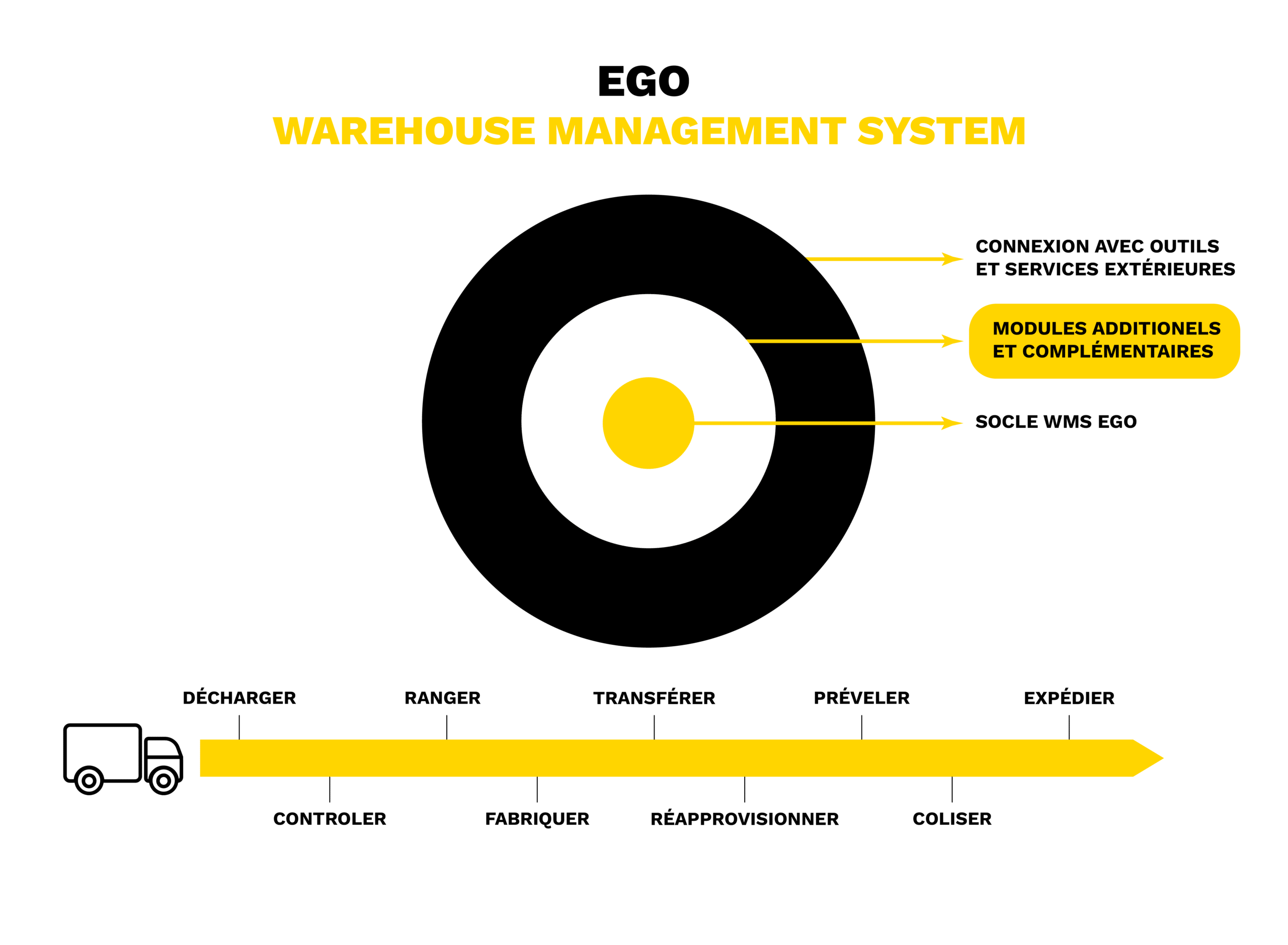
Additional modules

Plan
Planning and managing appointments and expected deliveries:
Appointment scheduling,
ASN creation,
monitoring and anticipating workloads at reception and ASN,
scheduling of free appointments (without purchase order or ASN).

Yard
Dock management, unloading and availability allocation:
Yard Management with allocation, monitoring and visualization of docks,
Dock management, availability, occupancy rate, release,
Unloading management: launching, monitoring, receiving and release of unloading.

Qual
Quality control and unlocking/blocking:
Quality control management in its 4 dimensions: isolation, blocking, control and sampling;
Automatic or conditional blocking and unlocking based on control tasks;
Isolation of goods based on criteria or systematic for availability to the quality department;
Management of quality control tasks and monitoring of the results of control tasks for the Quality Assurance and Finality (QAF);
Batch blocking, batch release and traceability of operations…

Reverse
Customer return management, generation, and processing (
Reverse logistics ): Processing of customer returns,
recognition of tracking numbers (shipping) and automatic creation of customer returns,
simplified return search by scanning a carrier label or shipping label, selection of a delivery, customer, date, shipped item… and multi-criteria cross-referencing,
assistance with verification upon receipt of the return.

Prod
For production and manufacturing, management of service lists, production outputs or restocking:
Integration of bills of materials,
Management of work orders on stock and on demand (Indexed management of work orders),
Automatic creation of service lists,
Automatic generation of production and packaging orders,
Management of production requests,
Production declaration and management of stock reintegration.

Nav
Inter-site shuttle management:
Shuttle creation,
Stock reservation for loading,
Shuttle status monitoring: Awaiting loading, loading, transit, awaiting unloading, unloading free…
Shuttle preparation,
Inter-site transit monitoring,
Shuttle unloading with addressing integration if needed.

Guided missions
Order preparation mission management (push vs. pull flow) – approval, scenarios, planning:
Definition of operator authorizations,
Definition of authorized areas,
Criteria for determining priorities,
Definition of scanning scenarios to switch processes to push or pull flow,
Mission planning: Storage, replenishment, preparation, consolidation, loading…

STMD
Management of transport and storage documentation for dangerous goods:
dangerous goods
storage Definition of authorization thresholds and real-time monitoring of thresholds with generation of blocks and alerts in case of thresholds being reached,
Integration of SDS,
Generation of legal reports.

Consumption
Organization of consolidation operations (content and order) at the end of the preparation chain: grouping, palletizing, labeling, control…:
Grouping of support,
Labeling,
Weight control,
Product control,
Consolidation,
Sampling,
Printing carrier label,
Assignment of a retention area or a dock,
Printing of delivery documentation.

TRM
Carrier integration, EDI shipping label generation, EDI confirmation and return:
Integration of the carrier's pricing grid,
Automatic multi-criteria carrier assignment,
Integration of the transport plan,
Management of special cases: required services, Product constraints, Customer constraints…
Pre-invoicing of transport,
Printing of carrier labels,
Generation of EDI transport confirmations and delivery returns.

PICKADVANCED
Dynamic management of storage , ABC class, zoning and thresholds:
Predictive analysis model of thresholds and replenishment level,
Assistance in defining storage strategies and replenishment strategies,
Management of model sensitivity to trend,
Definition of items subject to threshold,
Picking forecast and reserve consumption,
Threshold re-evaluation,
Management of exceptional events and capping.

Perf
Performance – productivity management and monitoring, KPIs:
Performance by activity, by team and by person, in receiving, reconstitution, preparation, consolidation or shipping,
Emulation between operators.

Dashboard
Customizable dashboard:
Selection of key performance indicators (KPIs),
configuration of indicators according to multiple criteria,
dashboard definition: grouping of indicators with definition of the period, granularity, refresh rate, display type, graph positioning within the dashboard, distribution…

Prestlog
Logistics services management and billing:
Management and descriptions of billing categories (storage/retrieval/picking/packing/relocation/loading),
Management of quotes on contracted and exceptional operations (outside contract),
Validation of quotes,
Generation of invoices and associated billing details,
Generation of an accounting bridge for billing and credit notes,
Printing of logistics service invoices.

WORKFLOW
Generation of tasks and emails following an event including:
Manual, one-off generation or automatic trigger,
Creation of associated tasks and creation of processes,
Tracking, assigning and restarting a task,
Sending emails, etc.

WEB
Interaction with merchant websites – e-commerce:
Interaction with platforms: Shopify, PrestaShop, Magento,
Interfacing with marketplaces: Cdiscount, Amazon, Rue du commerce…
Access via the EGO WebService API: stock consultation, order status updates, parcel tracking.

PORTAL
Carrier portal for workload smoothing:
Access to an online appointment booking portal,
Definition of capacity per dock per time slot,
Definition of opening range,
Management of appointment booking reminders: Appointment confirmation.
